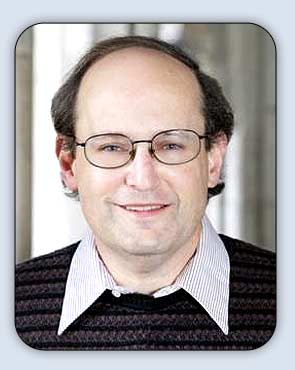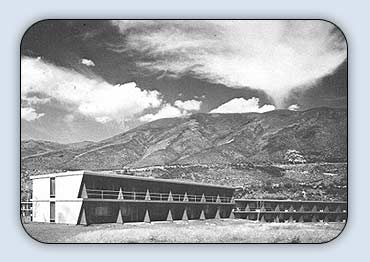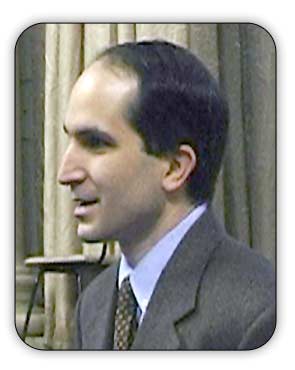 |
 |
 |
Volume
6 - Issue 01
JANUARY 2008 |
IN QUEST OF INFINITY – 12 By Prof. G. Venkataraman
Loving Sai Ram and greetings from Prashanti Nilayam. I must first of all thank the many readers who have taken the trouble to convey their reactions to this series; for me personally, this is most encouraging. Many are impatient to get to God! Believe me, everything I am telling you right now is all about God and His Omnipresence! However, there are many subtleties where Divinity is concerned, and we must get there step by step. Meanwhile, I do hope you are finding this journey and the quest we are involved in to be exciting.
One month has gone by since we last got together, and it is only appropriate that I begin with small recall of where we had reached last time. It all started with our going on a grand tour of the Universe. We then tried to enquire into how the Universe came into existence and that, we discovered, required us to brush up a little bit about the basics of physics of the small. After that we found out that till recently, even big-shot physicists did not know much about microscopic world, and are only recently beginning to explore it with great intensity and much passion. Part of the reason why such studies are being undertaken only now is that when one starts looking at the basic building blocks of matter, experimental studies become very difficult. They also become very expensive, making it necessary for many countries to get together to perform such experiments. However, to recall briefly the essence of what we covered in the last few issues, the big shift is that physicists have now started building up a picture of matter based on tiny strings rather than particles. This is what String Theory is all about. String Theory started on a rather modest tone and at that time it was hardly noticed; quite normal. Then came many jumps and exciting developments and soon many young bright “kids” began to enter the String Theory arena, because it was full of elegant mathematical challenges. This may sound very strange to you but maths has a great beauty and charm; it may be called the “classical music” of science. The “elders” of particle physics who in the beginning ignored all this and then became condescending, now began to turn cynical, asking, “So what good does all this do? String Theory has not helped in understanding anything specific and spectacular in physics. Big deal!” Well, that bridge could in fact be crossed in the not too distant future, and this issue is going to start on that part of the story. In brief, it is going to be about what String Theory has to say about the ultimate fate of the Universe. There are many ways in which this connection can be presented; I wish to do it basing myself on a very interesting book I recently came across. This book entitled Endless Universe – Beyond the Big Bang is what I am going to base my narrative on. There are, of course, any number of books and later, I shall cite some of them. The book I am drawing from is perhaps as good as many others; I am using this as the template because someone was kind enough to give that to me as a gift [!] and it certainly is most absorbing.
This book has two authors, Paul Steinhardt of America and Neil Turok from England . In the beginning, they did not even know each other; each entered Physics with his own personal interest but destiny brought them together against a background of a series of international events and these events illustrate beautifully how Physics evolves by people with very different talents and perspectives coming together. By the way, this often happens and one of the classic examples I can think right off the bat is the incredible discovery made by Francis Crick and James Watson of the structure of the DNA. I am sure you must have read the amazing story of that discovery in Watson’s immensely popular book The Double Helix.
Our story begins in March 1980, Paul Steinhardt then being a Junior Fellow in the Society of Fellows, Harvard University . He comes to know that one Dr. Alan Guth of Stanford is going to deliver a seminar on the Inflationary Universe, and decides to attend. He goes because this is a weekly seminar where one often hears bold ideas discussed by people working in frontier areas. The seminars focussed on topics in particle physics, the area in which Paul was immersed in at that time; a talk on cosmology in the Harvard Seminar was somewhat unusual and Paul decided to give it a try. And when he went there, he was happy to see all the local stars including many Nobel Prize winners and his own Ph.D thesis advisor were there. So far so good.
To continue, Guth gave his talk. It was very unusual – not surprising since the topic, cosmology was something only a few bothered about. Paul recalls, “I was stupefied. Guth had pieced together concepts from three disparate-disciplines of physics – grand unification theories [which try to unify the electromagnetic, weak and strong forces under one umbrella], general relativity and thermodynamics ( the study of how systems change with temperature) all areas that I enjoyed and knew well, and he had applied them to a subject I knew nothing about, cosmology, with revolutionary effect.” Even as Paul was beginning to be thrilled, something happened; Paul again: “Then came the crash…..[Guth then] explained why the bold and beautiful inflationary idea was doomed to dismal failure. The very mechanism that solved the cosmological problems made it impossible for the rapid explosion to end. Inflation, once begun, would continue for ever!” Reading this, you might wonder why I did not mention anything about this in the earlier issue wherein I introduced you to the idea of cosmic inflation. There I told you that the incredible inflation was shut off pretty quickly. I was telling you there about something what emerged after the initial bug had been fixed. Back to Paul: “I simply could not believe that such a beautiful idea could fail so catastrophically. Immediately after the lecture, I tried to see if I could find a flaw by examining each step of the analysis and by checking it using other methods. As I became more frustrated, I became more excited. I realized that whether inflation could be saved or not, there were more important problems to be solved. If inflation failed, it only meant that a new solution to the cosmological problems had to be found. I figured that I would divert my attention from my ongoing research for a month or two to see if I could concoct a solution; then, after this brief sojourn into cosmology, I would return to my research on quantum field theory. Needless to say, I was naïve; twenty-six years later, I am still working on cosmology.” Well, that tells you something about the compelling magnetism of this subject, does it not?! Let me get on with the story, Paul’s side that is. He was now hooked on cosmology, and struggling to fix the problems that existed then in the inflation picture. Slowly, he drifted towards making a place for quantum fluctuations. As you might recall, in an earlier issue, I had pointed out how Linde had independently incorporated this feature and finally came to a model of his own; what we now learn is that Paul Steinhardt also was drifting in the same direction, along with a few associates of course. On the way, there were moments of doubt; as Paul recalls, “Turner [a collaborator at that time] and I realised that the quantum fluctuations could spell triumph or tragedy for inflation.”
Many were on the same track and, as Paul notes, by the summer of 1982, it had become a red-hot topic. Around that time, Stephen Hawking in Cambridge was organising a workshop, intended to bring together some of the active workers, so that ideas could be exchanged and the fog cleared to some extent, if possible. Over to Paul now, for his recall of the workshop: “So, the workshop began with three draft papers with three different answers, and four different mathematical approaches, some spelled out and some not. Despite the chaos it caused at the outset of the meeting, having different approaches proved to be important for cracking the problem, because the calculation was subtle and complex mistakes were easy to make no matter which method was used. Also, each method was approximate, to some degree, invoking various simplifications and assumptions that made the calculations tractable. It was essential to have alternative methods to see if the different approximations gave answers.” May be I should clarify one point here. One thing the inflation picture had to make room for was for galaxies to be born, in billions really! You might ask, “what’s the problem?” Well, let us say the inflation fattened the Baby Universe enormously and then ended. Fine. However, if at the end of the inflation, the resulting Universe is very smooth, then there would be no chance for galaxies to nucleate and grow; there must be some tiny fluctuations in density at the end of the inflation so that in some regions of space at least, there are pockets of higher density that form the seeds from which galaxies could sprout and grow. At the end of the workshop organised by Hawkins, the models did allow room for seeds for galaxies, that is to say, the Universe which emerged after inflation did have density fluctuations that allowed galaxies to form and grow. But there was a problem and a big one too – the fluctuations in density that the various models offered were far too big for comfort. The prediction proved to be wrong soon after results from the satellite WMAP started becoming available. If you recall, and I had described earlier what this satellite and the later one COBE did, the satellites measured temperature fluctuations in the background cosmic radiation. While the theory forecast fluctuations of several degrees, experiments reported something a thousand times or more smaller. Clearly, that was a big set back.
In the summer of 1983, many theorists gathered at the resort station Aspen in Colorado to ponder about the whole issue. Paul goes there and along the side, he has another job – to conduct a Ph.D viva voce examination of a candidate named Neil Turok of Imperial College , London , whose thesis had been sent earlier to Paul for scrutiny. And this is where Neil enters the picture and let us now turn to his part of the story. But before that, a few parting words from Paul: “Because both Neil and his adviser, David Olive, were attending the Aspen workshop, Neil’s oral presentation was arranged to take place at the Aspen Institute on some afternoon during our time there – a fanciful location for a thesis defence, to be sure. Although Neil’s thesis was mostly mathematical in nature, with only one section somewhat related to cosmology, I decided to focus on that portion during the oral presentation. I wanted to test whether he had any serious interest in this area. I was very impressed by the outcome. Although he was obviously new to cosmology, Neil displayed an unusual combination of technical prowess, creativity, and self-confidence. I passed him, of course. But in addition to that, I made a mental note to follow this talented fellow’s career and look for an opportunity to collaborate with him in the future.” That had to wait for many years though.
We now turn to Neil Turok whose love affair with physics began in 1980 during the final year of his undergraduate studies in Cambridge University . At that time, he attended a lecture given by Stephen Hawking; the title was provocative: Is the End in sight for Physics? Basically, Hawking was thinking aloud whether a Theory of Everything was finally in sight. Neil found that talk so stimulating that he decided that he would plunge into Theoretical Physics and immediately went around looking for a suitable thesis adviser. He found one in David Olive, a brilliant and original mathematical physicist. When the time came, Olive set Neil Turok a real tough problem to solve, very mathematical in character. At this point, let us hear Neil himself: “Near the end of the project, concerned that my research was too formal and abstract to connect with the real world, I wandered into the office of one of my professors, Tom Kibble, to express my frustration. Kibble is one of the United Kingdom ’s most distinguished theoretical physicists.… A few years earlier, Kibble had realized that many unified theories automatically predicted that objects called cosmicstrings would form in the extreme conditions of the hot early universe. Cosmic strings are thin strands of concentrated energy that crisscross space in a spaghetti-like network and progressively straighten themselves out as the universe expands.” There were even suggestions that there could be some connection between cosmic strings and galaxy formation. Neil again: “Intrigued by the potentially spectacular link between fundamental physics and cosmology, I started working with Kibble on cosmic strings while finishing my main Ph.D project.” So that was how Neil Turok started working on topics that bridged particle physics and cosmology, involving strings in particular. Before I proceed further, I cannot resist the temptation to make a comment or two about the father of Tom Kibble. The reason is simply this; Tom’s father, Dr. W.F. Kibble was a Professor of Mathematics in the college where I had studied, the Madras Christian College in Madras – that was in the late forties and early fifties. I never attended any classes taken by Dr. Kibble but he was very well known as an extremely absent-minded professor. And sure enough, there were many Kibble jokes, all harmless of course, poking mild fun at this very fine and kindly gentleman. One of these is the following: There used to be right in front of the college building a big sun-dial – a clock where you read the time via the shadow cast by the sun on the specially made dial. The story goes that one evening, Dr. Kibble returning from a long walk wanted to know what time it was. It was dark and he had no watch. But he had a torch and he then went to the sundial and shone the torch on it to find out the time! Bit unfair but then, as always, I suppose boys would be boys. By the way, I wonder whether son Tom ever spent time in the campus with his father. Probably he went to school in England but I am sure he must have come now and then to India to be with his parents. Anyway, getting on with our main story, we now cut to Aspen where Neil went with his adviser and there faced the viva by Paul, his future collaborator. Back to Neil: “After my thesis defence in Aspen , there was champagne all around. As all of us celebrated, we speculated about where the new field of particle cosmology might lead. The growing problems in the theories of inflation and grand unification [of all the fundamental forces in physics] were worrisome, but the mood was nevertheless sanguine. Many anticipated that the setbacks would be minor and that particle physicists, cosmologists, and astronomers would henceforth work together in a powerful, combined discipline that would advance our knowledge of, simultaneously, the very large and the very small.” Things did not quite turn out that way. Not only did the anticipated collaboration between Paul and Neil not form immediately, but, even more generally, particle physicists and cosmologists went their own ways. We cut now to 1996 when Neil, after a spell in America , was now back in Cambridge . The big interest was on what kind of temperature fluctuations were required in the early universe to trigger galaxy formation. Over now to Neil to hear what happened then:
“It was with a very open mind that I decided to propose a scientific program at the Isaac Newton Institute for Mathematical Sciences in Cambridge devoted to cutting-edge issues in cosmology. …… To develop the proposal I needed some co-organizers, and it did not take me long to decide who the ideal choices would be.” It would be Paul Steinhardt in America and Valery Rubakov, of the Institute for Nuclear Research in Moscow . Neil again: “To my delight, both Paul and Valery accepted immediately. We decided to kick off the program with two conferences: one on the latest developments on the observational side and one on new theoretical ideas.... In the final month as the [second] meeting approached, more and more people signed up to attend. The meeting was a huge success …………… The Isaac Newton Institute meeting was above all, a vital stimulus to our own research. It convinced us that, finally, string theory and super-gravity has something really interesting and new to say about the cosmos. After more than a decade, Paul and I had finally converged on a project we wanted to pursue together.” What was that? Well, the short answer to that is: Giving the Big Bang a new and origina twist! That is exciting, is it not? What exactly was that new twist? Ah, for that you would have to wait till the next issue! Meanwhile, I wish to make just two comments here. The first is that what we get as science news in books, magazines, radio and TV is like a finished movie; we get to see and hear only about the end-result. In the present instalment, I have made a deliberate attempt to give you a glimpse of what goes on behind the scenes, how scientists too stumble, grope for, fail and try once more, and so on in their quest to unravel the mysteries of Nature. Also, how they are obsessed with the quest. That is why a famous Indian scientist Sir C. V. Raman [about whom Swami often speaks to students] once said, “Science is a very jealous mistress,” meaning she does not allow her devotees much time to get involved in other things. When two scientists who are intensely engaged in research meet, they start talking shop before even saying hello. And if they happen to be competitors, they carefully guard all information about what they are doing, even as the other person is desperately engaged in a fishing expedition! All this is fascinating colour and background no doubt but one reason why I am making a special point about including this “local flavour” if I might call it that is to stress that when the chips are down, all so-called great people, be they artists, musicians, writers, sportspersons, scientists, and so on, are as much susceptible to human weaknesses such as rivalry, jealousy, and so on. That said, it is an empirical fact that a large percentage of scientists who are properly trained, do try to be as objective as possible while making their judgement – that is their nature; this is just like doctors by and large being instinctively compassionate. Now what is the point I am trying to make with all this blah? In fact, is there any? You bet there is! And that is the following: Science today has become too powerful; which means its management and steering must be overseen by society as a whole so that science and technology are not hijacked by unscrupulous interests whose only goal is to make a fast buck. If you think about it for a while, you would quickly realise how important this responsibility is. How is society to make sure that it acts as a good watch-dog? By itself being solidly committed to morals, to Sathya and Dharma. And when would that happen? When each and every individual human being himself or herself as the case may be, becomes a devotee of Sathya and Dharma. So, if we call ourselves devotees of Swami, we had better start with a simple self-check: “I call myself a devotee of Swami but am I also a real devotee of Sathya, Dharma, Prema, Shanti and Ahimsa?” Let our Conscience speak and give the answer; don’t let ego reply! So long, and take care! May all be well with you in the meanwhile!! Jai Sai Ram.
|
|||||||||||||||||||||||||||||||||||||||||||||||||||||||||||||||||||||||||||||||||||
Vol 6 Issue 01 - JANUARY 2008
|
Best viewed in Internet Explorer - 1024 x 768 resolution. |












